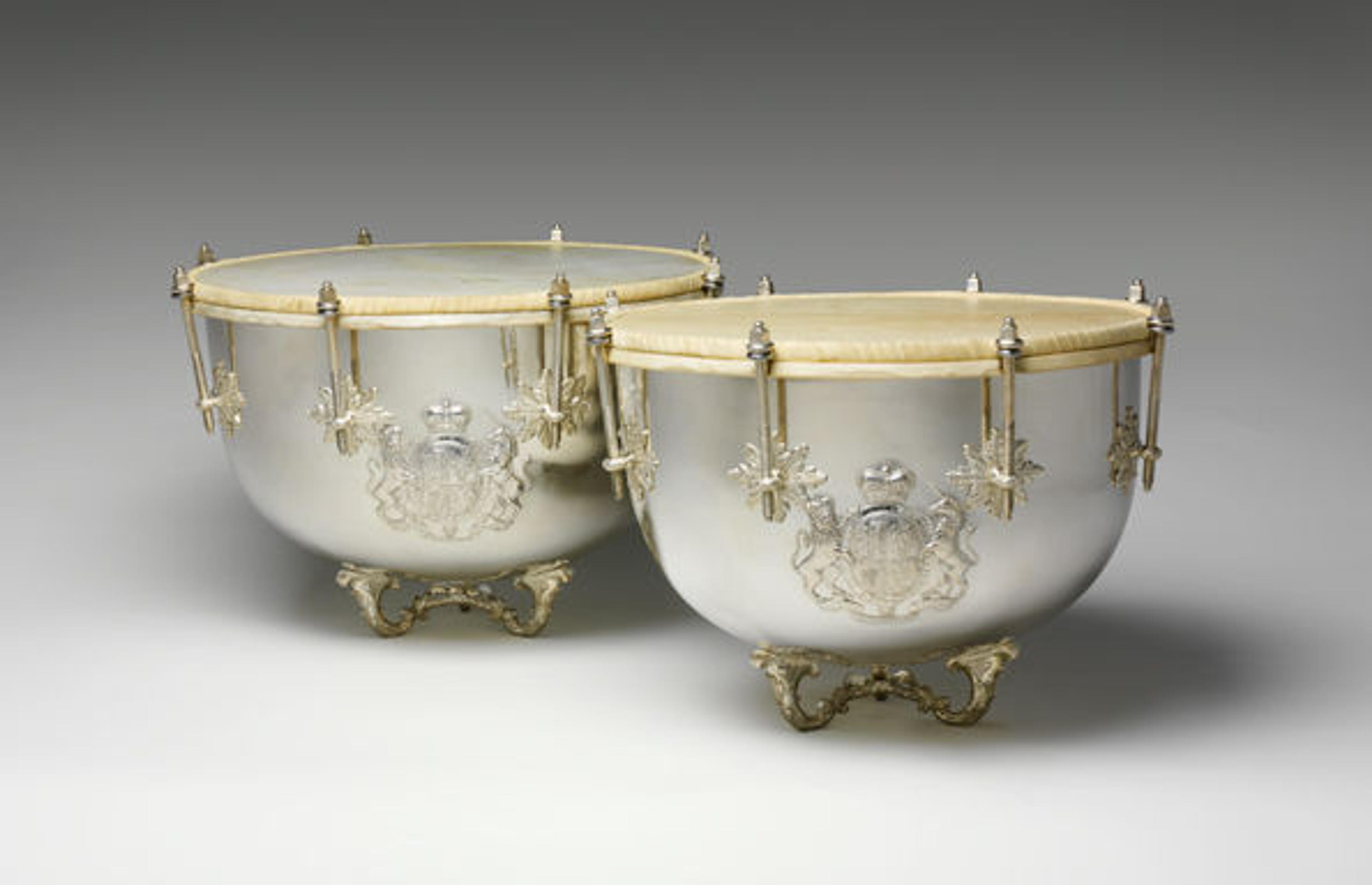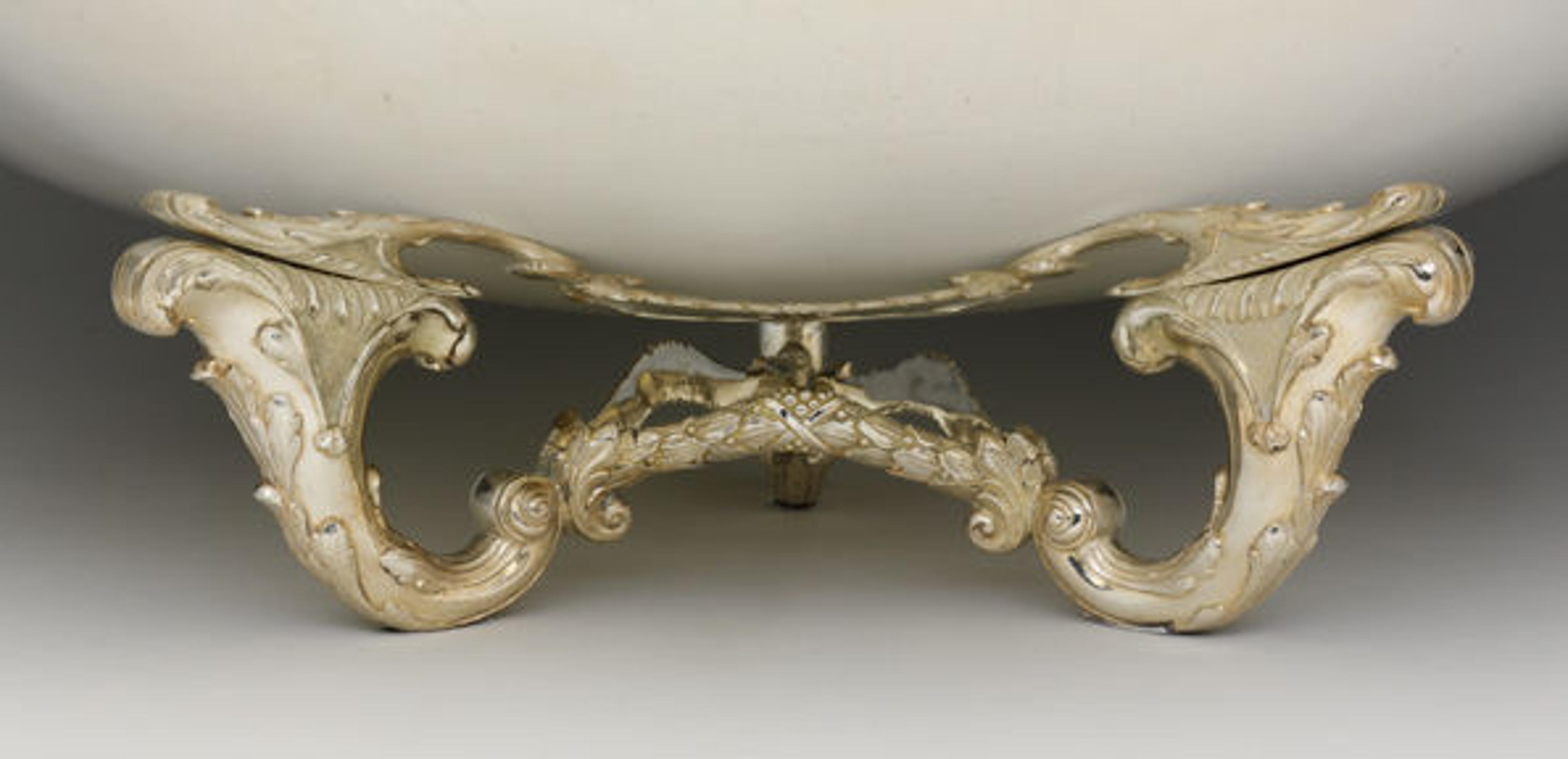
Franz Peter Bunsen (German, ca. 1725–1795). Kettle Drums, 1779. Silver, iron, calfskin, textiles; Diameter: 53 cm (20 7/8 in.); Height: 41 cm (16 1/8 in.); 24 kg (52.9 lbs.). The Metropolitan Museum of Art, New York, Purchase, Robert Alonzo Lehman Bequest, Acquisitions Fund, and Frederick M. Lehman Bequest, 2010 (2010.138.1-.4)
«Every year in June, a royal military event known as "Trooping the Colours" is held in London. The event is an official celebration of the monarch's birthday, even though their birthday could actually be any other time of year. Among the many formal displays of pageantry that occur during that celebration is a review of the Household Guard Regiments. On that occasion, the drummers of the Household Cavalry bands use special silver kettledrums—extraordinary instruments have been a part of the court's pomp and circumstance since the nineteenth century. The drums used in London are closely related to a pair of silver kettledrums that are a part of the Department of Musical Instruments' collection here at the Met.»
The Museum's drums were made in 1779 in Hanover by the court goldsmith Frantz Peter Bunsen (ca. 1725–1795) and bear the coat of arms of King George III, king of Great Britain and Ireland as well as elector of Hanover. The drums were given to the Life Guard Regiment, who functioned as the monarch's personal guards even though King George would never set foot in his German dominions during his long reign from 1760 until his death in 1820. The drums were to be used in important ceremonial duties alongside a set of pre-existing silver trumpets.
The drums are exquisite examples of Neoclassical design. The coat of arms is executed using the repoussé technique of pushing the shape out from inside the drum and then chasing and engraving the detail on the exterior. Other decorative elements include graceful tripod bases that are directly attached to the kettles and decorated with an acanthus-leaf design. There are decorative applique plates attached to the shell behind, where nuts receive the tuning bolts that are in the shape of eight-pointed stars and continue the acanthus-leaf motif.

Franz Peter Bunsen (German, ca. 1725–1795). Kettle Drums (detail of tripod base), 1779. Silver, iron, calfskin, textiles; Diameter: 53 cm (20 7/8 in.); Height: 41 cm (16 1/8 in.); 24 kg (52.9 lbs.). The Metropolitan Museum of Art, New York, Purchase, Robert Alonzo Lehman Bequest, Acquisitions Fund, and Frederick M. Lehman Bequest, 2010 (2010.138.1-.4)
Silver kettledrums were incredibly rare, as they were extremely costly and only made for the most powerful nobility in Europe as grand displays of their wealth. The drums were used on horseback, with one drum on either side of the horse and a player seated behind. The slightly larger drum would be placed on the right side of the horse, with the smaller drum on the left—the reverse order used by modern orchestral timpani players—in order to accommodate the wearing of a ceremonial sword on the player's left side. While the musician is playing the drums and enhancing the performance with elaborate arm flourishes, they control the horse by reigns that are connected to the stirrups. An original pair of red-velvet banners that survives with the Museum's drums would have been draped around the lower portion of the instruments for ceremonial occasions.
In 1804, the drums (along with much of the royal household) were moved from Hanover to London in order to avoid being captured by Napoleon's approaching army. The silver drums were exhibited in 1805 at Windsor Castle for a grand event hosted by the royal family, and soon after the Bunsen drums were seen at the London court, a similar pair of drums was presented by King George III to his London Cavalry Regiment. It is likely that seeing these incredible pieces from the King's Hanoverian court resulted in the need to outfit the London court in the same splendor.
Follow Jayson on Twitter: @JayKerrDobney